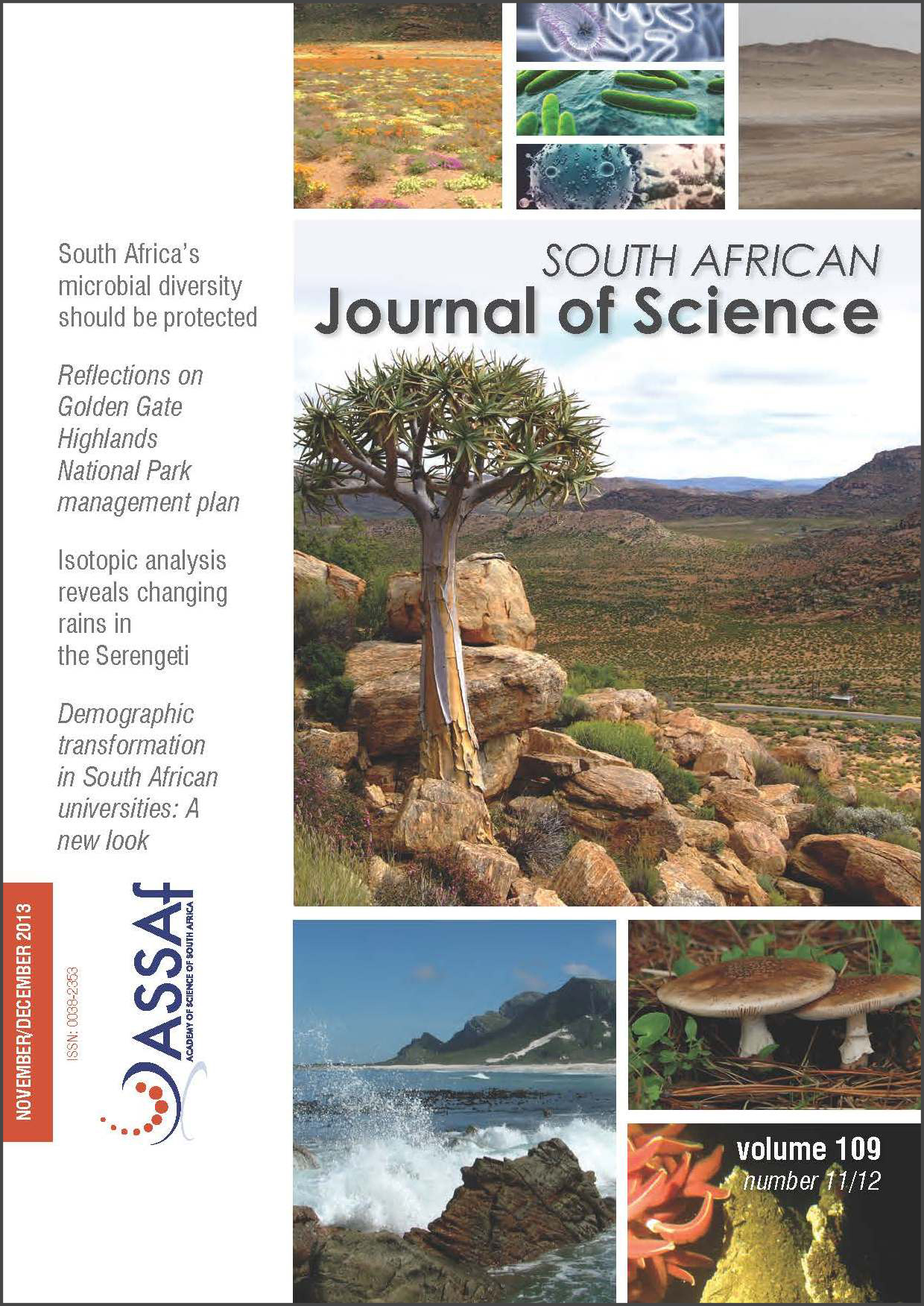Prediction of soil distribution on two soilscapes in land type Dc17 east of Bloemfontein, South Africa
DOI:
https://doi.org/10.1590/sajs.2013/20120021Keywords:
predictive soil mapping, soil survey, discriminant analysis, Gladstone, PotsaneAbstract
The predictive nature of digital soil mapping makes it a labour- and cost-effective way of facilitating soil surveys. A digital elevation model was used to generate terrain attributes that can be used to infer the distribution of soil associations relative to the topography. Two study areas – Gladstone and Potsane – in the Free State Province of South Africa were considered. Slope, aspect, contour and plan curvature, topographic wetness index and topographic morphological unit were used to develop a model for predicting soil associations. Discriminant analysis was employed to develop the model. The model was trained on data obtained from Gladstone and validated on data from Gladstone and Potsane. Predicting soil form was unsatisfactory. Prediction done on soil associations, with soils grouped as deep, shallow and valley-bottom soils (criteria closely related to the suitability for in-field rainwater harvesting), achieved acceptable improvement in prediction accuracy. For Gladstone, when analysis was done using equal prior probability, accuracy percentages of 56.9%, 51.5% and 58.3% were found for calibration, cross-validation and areas suited to in-field rainwater harvesting, respectively. With prior probability set in accordance to sample frequency, the accuracy percentages were improved to 83.1%, 80.0% and 94.6%, respectively. In Potsane, the prediction accuracy percentage was low (38.23%) with equal prior probability but markedly improved (67.65%) when prior probability was similar to sample frequency. These results support the validity of the statement that the predictive nature of digital soil mapping makes it a labour- and cost-effective way of facilitating soil surveys.
Published
Issue
Section
License

All articles are published under a Creative Commons Attribution 4.0 International Licence
Copyright is retained by the authors. Readers are welcome to reproduce, share and adapt the content without permission provided the source is attributed.
Disclaimer: The publisher and editors accept no responsibility for statements made by the authors
How to Cite
- Abstract 345
- PDF 448
- EPUB 186
- XML 199













.png)